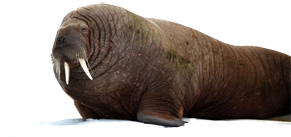IQ Program and Database
Objectives
- To comply with relevant directions in the International Convention on Biological Diversity, as well as in the Canadian Biodiversity Strategy;
- International Convention on Biological Diversity, Article 8: Respect, preserve, and maintain indigenous knowledge, innovations, and practices, and promote their wider application.
- Canadian Biodiversity Strategy, Traditional knowledge can provide an excellent basis for developing conservation and sustainable use policies and programs. All too often, however, traditional knowledge is inappropriately used or disregarded by policy-makers, scientists, resource planners, and managers.
- To fulfil applicable principles and objectives of the Nunavut Land Claims Agreement (NLCA); and
- NLCA, s. 5.1.2(e): There is a need for an effective system of wildlife management that… recognizes Inuit systems of wildlife management that contribute to the conservation of wildlife and protection of wildlife habitat.”
- NLCA, s. 5.1.3(b) ii and iii: … a wildlife management system that fully acknowledges and reflects the primary role of Inuit in wildlife harvesting… (and) serves and promotes the long-term economic, social and cultural interests of Inuit harvesters.”
- To follow relevant principles and concepts of the Nunavut Wildlife Act;
- Under the Act, both the government of Nunavut and the NWMB are under a positive obligation to follow relevant IQ principles in undertaking their duties.
- To ensure the systematic and culturally-appropriate inclusion of Inuit Qaujimajatuqangit (IQ) in wildlife research and management within Nunavut; and
- To establish a strong, complementary relationship between western science and IQ, resulting in more effective wildlife management in Nunavut.
Overview
Traditional ecological knowledge (TEK) concerns specific knowledge, obtained through Inuit experience, about various parts of the environment, including plants, animals, weather, and other physical elements. TEK also includes interpretations of the ways in which these parts of the environment interact. Inuit Qaujimajatuqangit (IQ) consists of TEK, as well as Inuit beliefs about how the world works, and the values necessary to behave in an ethical manner in human interactions with the animals and the environment.
The NWMB’s IQ Program recognizes four categories of IQ:
- Factual knowledge of the environment, and interpretation of the ways that parts of the environment influence each other (TEK);
- Factual knowledge about past and current use of the (regional) environment (TEK);
- Values about the environment – how things should be, what is proper to do, how to behave towards animals and the environment (IQ values); and
- The culturally-based foundation for the entire Inuit belief and knowledge system – the framework that provides explanations as to why things are the way they are (IQ beliefs).
The NWMB’s IQ Program will consist of the following five integrated elements:
1. IQ Database and Library
The purpose of the IQ database and library is:
- To assist the NWMB in achieving its vision: “Conserving wildlife through the application of Inuit Qaujimajatuqangit and scientific knowledge;
- To contribute to an improved understanding of the arctic, and to developing solutions to environmental and wildlife management problems;
- To develop a searchable information base of Inuit-Aboriginal knowledge to compliment the current and – to date – primary information base of scientific knowledge relied upon by the NWMB;
- To provide an effective research tool for the NWMB (and its co-management partners) in fulfilling its mandate; and
- To recognize the vital importance of IQ in Nunavut wildlife management and to help encourage further IQ research.
2. IQ Staff Person;
The IQ staff person will be responsible for updating the IQ database and library as new information becomes available, and will ensure that the database is used to its full potential as it relates to the duties and functions of the Board as set out in the NLCA.
3. IQ Research Program;
The IQ database will also be used by the NWMB (and its co-management partners) to identify research priorities, and develop study methodologies that are appropriate to address the questions being posed by wildlife managers.
4. NWMB IQ Network; and
The IQ database will ultimately be integrated with our current website, to allow researchers, co-managers, and other interested parties to access information at any time.
5. Consistent, integrated consideration of the best available western science and IQ in NWMB decision-making.
The network will be complimented by an on-site library of hard-copies of reports, videos, documentaries, research reports, and other documents to increase the capacity of Nunavut’s wildlife management system to apply IQ.



